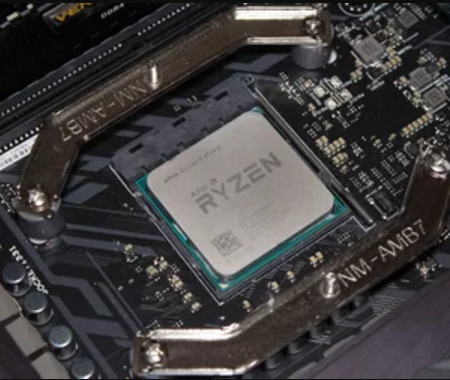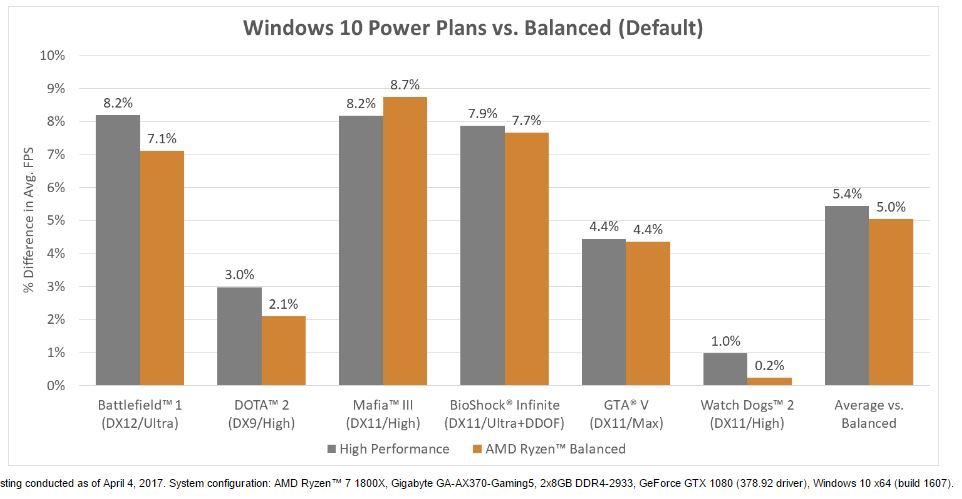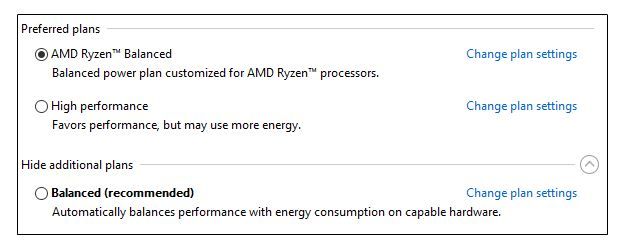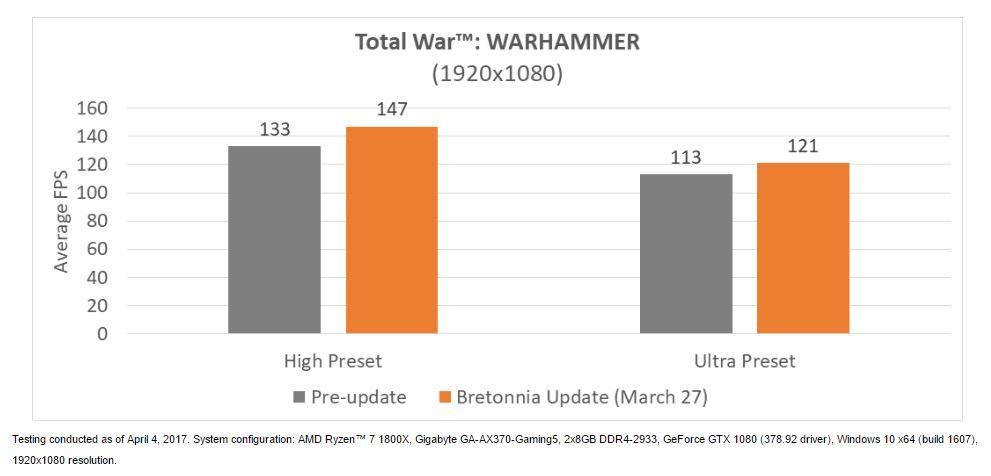AMD’s Ryzen Receives New Power Plan, Game Patch

AMD’s Ryzen launch has brought us a new lineup of eight-core processors with disruptively low price points, but the relationship between performance and price is inextricably intertwined. Ryzen excels at workstation applications, but its curious gaming performance trends have dominated the conversation. We’ve recorded lower than expected performance in several titles, and after a bit of experimentation, we found that part of the problem stems from the Windows power profile. AMD has also stated that many games have difficulty navigating its unique cache and core topology, which requires specific optimizations delivered via patches. AMD announced in a blog post that it created a new Windows profile to address the power issue, and also announced that a third game received a performance-boosting patch.
Turn Up The Voltage!
Processors employ voltage and frequency gating to conserve energy. The processor has several pre-defined voltage and frequency settings, called P-States, which it applies on a per-core basis. In the interest of preserving performance as much as conserving power, the processor can dynamically switch cores into various P-States based upon the current environment, but lower power states result in longer resumption times. P-State transitions can occur during gaming sessions, and when your application catches the CPU sleeping, it results in reduced performance.
Several Windows power profiles, such as power saver and balanced, allow the operating system to decide when to transition between states. The key issue revolves around latency–there is up to a 30ms delay between when the operating system orders a power transition and the processor acts upon it. The delay varies based upon power plan parameters. Switching to the high performance power profile hands the power management tasks back to the processor. With sole control of its own power states, a modern processor can transition between the various sleep states in 1ms, which reduces the performance problem. Unfortunately, it isn’t as power efficient.

AMD’s solution? A middle ground, of sorts. AMD’s new Ryzen Balanced power plan reduces timers and thresholds for P-state transitions to improve performance, and according to AMD-provided information, it yields similar performance to the Windows high performance power profile.

You can download the new power profile from AMD’s blog post and install (and select) it. AMD will also bundle the new power plan in the next iteration of its chipset drivers. AMD didn’t list a specific date for the new chipset driver release, but the package will install the new power plan and enable it automatically. Samsung also takes a similar tack with its Samsung power profile for SSDs, so the approach isn’t without precedent.
The AMD Ryzen™ Balanced power plan still permits aggressive power management. There should be little difference between the OEM Balanced and the Ryzen Balanced plan. We’re interested in your feedback!
Performance of the AMD Ryzen™ Balanced power plan should be on par with the High Performance plan. We’re interested in your feedback on this, too.
Finally, if you see a third-party tool reporting “idle” clocks in the range of 3200-3400MHz, you can be virtually certain that the core is actually sleeping and the tool is simply reporting the last known P-State.
AMD is looking for feedback before it rolls the new power plan into the chipset drivers, so we might see more tailoring over time. AMD hasn’t quantified the impact to power consumption and thermals, but indicates it is similar to the existing balanced power profile. It remains to be seen how this will impact users that employ other custom profiles, such as Samsung’s SSD profile. As far as we know, you can’t run two power profiles simultaneously.
Total War: Warhammer Gets A Ryzen Facelift
AMD’s new Zen architecture serves as the underlying foundation for Ryzen processors, but many games have difficulty with its unique SMT implementation and topology. As such, targeted optimizations to the code base should yield improved performance. A few developers, such as Stardock/Oxide with Ashes of the Singularity: Escalation and Valve with DOTA 2, have already issued performance-boosting updates. We tested the new Ashes of the Singularity: Escalation update and found that it does provide significantly better performance, which is a promising development.

During the Ryzen launch, Creative Assembly also announced its intentions to optimize for the Zen architecture. The company released the Bretonnia patch for Total War: Warhammer and AMD provided a few benchmarks to quantify the performance increase. Interestingly, AMD notes that the patch improves thread scheduling:
The March 27th Bretonnia update helps the underlying game engine better understand the topology of Ryzen with respect to the number of logical vs. physical cores. Overall, this helps Total War: WARHAMMER better schedule threads on the processor to reduce resource contention.
AMD has previously stated that the Windows 10 scheduler is not at fault for Ryzen’s reduced performance, so the thread scheduling disparity is obviously at the application level. A third developer coming forward to support the new architecture is promising, and hopefully more follow suit.
The Master Is Ryzen
AMD’s Ryzen Master is a simple software-based overclocking tool, but it currently requires HPET (High Precision Event Timer) for accurate reporting. Surprisingly, AMD recommends that you disable HPET for the best performance in games, which means you will have to switch back and forth to get the best gaming performance and also use the Ryzen Master tool.
Ryzen Master now reports junction temperature, rather than tCTL, by automatically removing the tCTL offset on the AMD Ryzen 1800X, 1700X, and 1600X processors. See the “temperature reporting” section of this blog for more context on tCTL.
The installer no longer enables or requires HPET when Ryzen Master is installed with a system running an AGESA 1.0.0.4-based BIOS. See the “let’s talk BIOS updates” section of this blog for more context on AGESA 1.0.0.4.
No more of that. AMD issued a new updated tool that breaks it free from its HPET chains, provided that you have an AGESA 1.0.0.4-based BIOS. It also reports temperature more accurately now, too.
Thoughts
AMD’s promise of a rash of game updates to improve performance was met with skepticism, but the situation appears to be improving nicely. We hope to see more developers come forward in the coming months, and we likely will.
AMD’s Ryzen is a nice silicon canvas, but as with any new architecture, it will take some time before the picture is complete. In the meantime, Ryzen 5 processors launch next week. We are busy testing. Stay tuned.